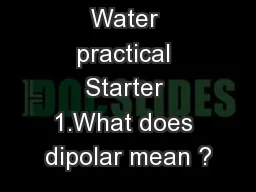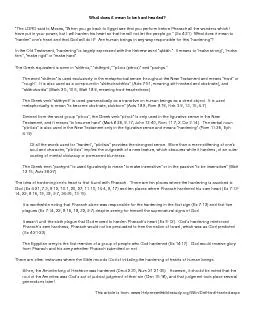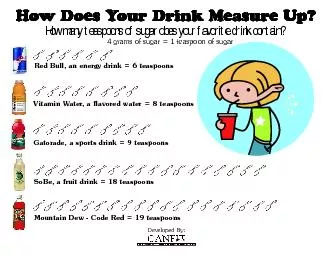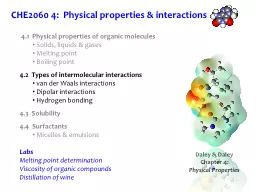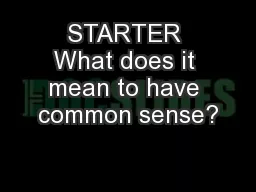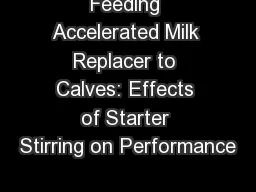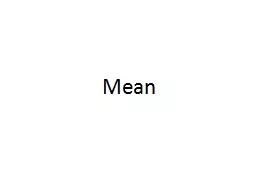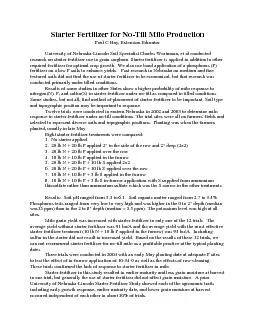PPT-Water practical Starter 1.What does dipolar mean ?
Author : yoshiko-marsland | Published Date : 2018-02-12
2What does cohesive mean 3What does dissolve mean 4 Would water be more or less cohesive if it had dissolved a solute Follows written procedures a Correctly
Presentation Embed Code
Download Presentation
Download Presentation The PPT/PDF document "Water practical Starter 1.What does dipo..." is the property of its rightful owner. Permission is granted to download and print the materials on this website for personal, non-commercial use only, and to display it on your personal computer provided you do not modify the materials and that you retain all copyright notices contained in the materials. By downloading content from our website, you accept the terms of this agreement.
Water practical Starter 1.What does dipolar mean ?: Transcript
Download Rules Of Document
"Water practical Starter 1.What does dipolar mean ?"The content belongs to its owner. You may download and print it for personal use, without modification, and keep all copyright notices. By downloading, you agree to these terms.
Related Documents

